The Internet is full of popular dog trainers, especially on video-forward platforms like Tiktok and YouTube. The quality of the advice they provide varies from excellent to broadly correct to flat-out dangerous.
Today, we’re exploring a popular internet dog trainer who goes by the name The Dog Daddy. He produces lots of online dog training content and charges eyebrow-raising fees for one-time traveling training sessions around the USA.
First, we’ll dive into The Dog Daddy’s background, his philosophy, and some of his most popular videos. And then, I’ll give you my professional opinion as a certified dog behavior consultant regarding Dog Daddy, his videos, and his training lessons.
Dog Daddy: The Basics
The Dog Daddy is a popular social media trainer, with (as of March 2023) roughly 2 million followers on YouTube, 2.2 million followers on TikTok, and 200,000 followers on Instagram.
He also appears to be completely uncredentialed, and he is nearly universally reviled by professional dog trainers of all training methodologies.
The Dog Daddy’s real name is Augusto Deoliveira, but it’s nearly impossible to gather further information on him.
His website does not have an “about me” page, meaning there is no information on his background, education, or experience with dogs. In fact, I had to dig deep into Facebook groups exposing his breeding program and training methods to even find his real first and last name.
Dog Daddy’s Training Philosophy
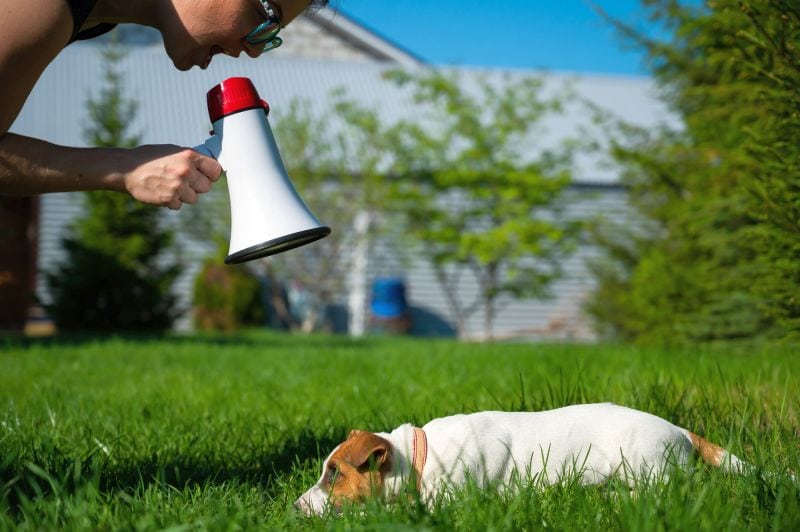
There is absolutely no information on Dog Daddy’s website regarding his training philosophy. There is no biography page and the FAQ centers on the logistics of working with him rather than his experience, education, or philosophy.
In order to try and learn more about Deoliveira’s training philosophy, you must watch his training videos and search the internet for information from clients.
What I found deeply disturbed me.
The Dog Daddy seems to be highly confrontational, aggressive, and forward in his approach with dogs.
I did find this video explaining his training methods, in which he starts out by saying that he does not know what his new clients are going to ask for help with. This means he is taking money from clients without asking about veterinary background, exercise, enrichment, or training history.
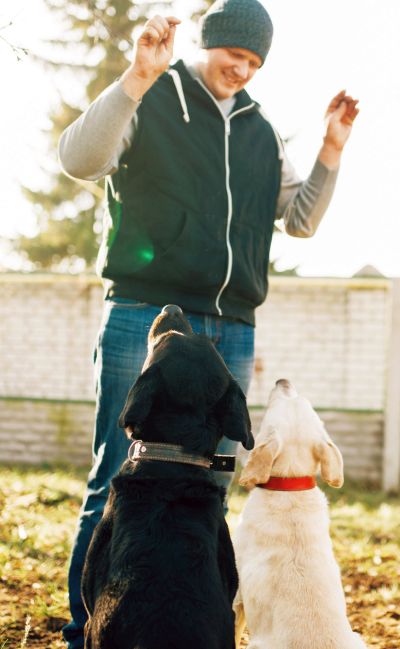
Given how many serious behavior issues are actually related to veterinary concerns, this is appalling.
Anyone assisting clients with serious behavior concerns should have a thorough intake process to ensure that safety measures, veterinary exams, and basic lifestyle changes can be prepared prior to meeting.
The video then cuts to Dog Daddy whipping a terrified, snarling dog around by its neck. Imagine this dog had hip dysplasia, a slipped disk, or a thyroid issue contributing to its aggression.
One minute into the video, we’ve already seen several dogs attempting to flee from Dog Daddy, including one that slips out of a collar and interacts with another dog.
This is extremely alarming poor client management and care.
Fundamentally, Dog Daddy’s training is based on a severe version of “pressure and release.” He uses prong collars to “communicate” with dogs via the leash through repeated tugs to the dog’s throat.
Nevertheless, Dog Daddy claims to use positive methods.
While you can see Deoliveira petting dogs and saying “good boy,” it is clear that the dogs are not appreciating this contact. The dogs remain tense and exhibit lip-licking behavior (both of which are signs of stress in canine body language) as he touches them.
I have yet to see a video in which a dog looks happy, relaxed, or affiliative with Dog Daddy.
This is not positive dog training.
His promotional videos (presumably the training he is most proud of and believes reflects well upon his business) are littered with clips of Dog Daddy approaching muzzled dogs that are actively trying to escape from him.
He takes the leash from the owner and holds it up, choking the dog, while the four-footer flails, thrashes, and occasionally attempts to bite him. I’ll grant that Dog Daddy’s defensive leash handling skills are solid. But eventually, exhausted and short on oxygen, the dogs collapse.
The video inevitably cuts to the dog heeling or sitting at Dog Daddy’s side. These dogs are wide-eyed and panting hard. Their tails are often tucked or low, their movements are low and flinchy, and the dogs’ ears are pinned back.
In short, the dogs are extremely stressed out and appear to have given up.
Many of these dogs start out as barking, lunging messes that do look scary at first. However, this sort of confrontational approach, choking a dog until it cannot fight anymore, is some of the most abhorrent dog training I’ve seen by a popular internet “trainer.”
In fact, training “techniques” like these have been considered cruel and outdated by the dog behavior world for decades. They are likely to backfire in the long run.
The quick, social-media-ready clips posted by Dog Daddy do nothing to demonstrate that these dogs have learned appropriate ways to interact with strangers or strange dogs.
The dogs have simply learned that it is dangerous to disobey Dog Daddy or attempt to escape from him. Modern balanced trainers (a subset of trainers who are comfortable with using corrections) and positive reinforcement based trainers alike are equally disturbed by the Dog Daddy’s videos.
What Does Dog Daddy Offer?

The Dog Daddy is quite popular on TikTok, Instagram, and YouTube where you can access some of his materials for free. However, most of this material shows out-of-context training with no explanations of the dog’s history, training goals, the plan being implemented, or long-term follow-up.
Deoliveira offers worldwide travel for small training classes, rather than offering consistent classes from a home location. In 2023, his travel schedule included courses in New York, Hawaii, Colorado, Arizona, and Alaska.
Students who wish to work with him can schedule a small group class ($400 per three-hour session), private sessions ($1,200 per 90-minute session), or an observer spot in a group class ($100 per three-hour session).
Those are some of the highest prices I have ever seen for dog training, including sessions with world-renowned trainers.
Dog Daddy specializes in taking leash reactive dogs and using leash pressure to force them to heel and sit. Most of his clients have dogs that have been deemed “untrainable” or “dangerous.”
Aspiring trainers who would like to learn from the Dog Daddy can also purchase the five-day “Train the Trainer” course for $5,000. The course site advertises that you will:
- Be “immersed in highly effective dog training techniques from basic and advanced obedience to behavior modification and how to work with more challenging dogs.” The website does not give detail on the training techniques employed or promoted by Dog Daddy. It does not define obedience or behavior modification, nor does it give examples of specific behaviors that students will learn to teach.
- “Gain a deep understanding of dog body language and behavior.” While this sounds great, Dog Daddy’s explanations of dog body langauge and behavior are dubious at best in his videos and I would be hesitant to take his instruction on these topics.
- “Learn how to calm a dog’s mind and get them in tune with you quickly, minimizing their fear, frustration and resistance as much as possible.” Again, this sounds lovely. However, I have seen buckets of evidence demonstrating that the Dog Daddy consistently increases stress and fear through confrontational methods, doing everything but minimizing their fear and resistance.
Students get direct coaching from Dog Daddy and get hands-on practice with clients in real-world situations. Students also get a welcome breakfast and celebration luncheon and are presented with a certificate of completion.
What Do Dog Owners Think about Dog Daddy?
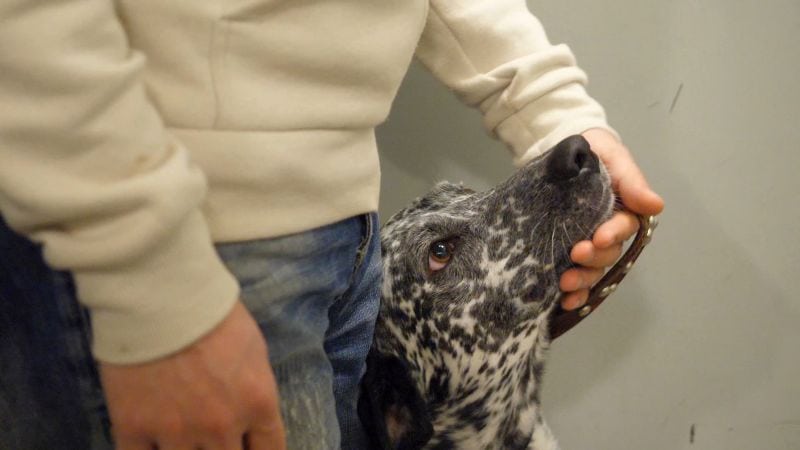
Googling “Dog Daddy Reviews” highlights just how controversial he is as a figure. Social media comments seem to be carefully deleted and curated, as are reviews on his website.
Nearly everything found in places Dog Daddy can’t control are extremely negative.
The first results I found when searching (note that Google results change all the time) were as follows:
- A YouTube video from K9Tay breaking down one of Dog Dadddy’s YouTube videos in exhaustive detail, highlighting similar concerns to my reactions in the philosophy section above.
- A video from Dog Daddy himself after allegations of abuse, neglect, and unethical behavior arose. This video highlights how much the Dog Daddy works with extreme cases of shelter dogs that were due to be euthanized due to aggression. The video does not address any of the many accusations levied against him, show the dogs after the training sessions, or highlight any examples of the dogs being adopted. You do not hear from happy owners or enthusiastic shelter managers.
- Another YouTube video from K9Tay breaking down the methods exhibited in a promotional video from Dog Daddy, very similar to the first video.
- A Facebook group titled “The Truth About Dog Daddyy Trainer and Breeder.” This group highlights Dog Daddy’s history of neglect to the many, many dogs he lives with as a breeder. There are dozens, if not hundreds, of first-person accounts detailing the purchase of sick and terrified puppies. It also discusses the many rental properties Dog Daddy has trashed with garbage and dog feces. There are also screenshots of lawsuits between former clients and Dog Daddy.
- An article from Staten Island Live titled “‘Dog Daddy’ canine breeder scammed Staten Island couple out of money and a promised family pet, says report.” This article highlights the case of a couple who attempted to purchase a German shepherd from Dog Daddy’s breeding operation, Griffin Shepherd Kennels (editor’s note: It appears that Deoliveira has shuttered Griffin Shepherd Kennels and launched a new breeding business under the name The Ultimate German Shepherd). After paying $1,000 neither the dog nor the refund arrived. This article also mentioned a Boston 25 News article highlighting claims of Dog Daddy selling flea-infested, underweight, and sick dogs while hiding medical records. The Boston article states that as of May 2015, there were nine complaints against Griffin Shepherd Kennels at the Massachusetts Attorney General’s office alone.
- An article from Puppy Leaks titled “Please Stop Sharing That Guy Walking Shepherds Off Leash.” This article outlines the allegations of fraud and abuse against Dog Daddy.
- A thread from GermanShepherds.com called “What is Augusto Deoliveira’s “Training” like?” In this thread, one poster shares a video from YouTube and asks people for their observations. Many say they couldn’t finish the video and point out many harsh and “unfair” corrections. Not one person chimes in to defend Deoliveira or his training methods.
- In the last example on my first page of Google, a Reddit thread pops up called “Beware of Augusto Deoliveira.” The original post highlights the experience of another puppy buyer who was sold a $2,000 puppy that showed up underweight, sick, and terrified without her promised papers. The owner details attempts to reach Deoliveira and return the dog or get a refund. A commenter shares their experience of paying $400 for a class, then canceling when she read more about Deoliveira and realizing that audit spots (which typically involves watching a class without bringing your dog) would be “spectating” on her dog’s training session.
It is possible to find positive reviews of Dog Daddy, but these are almost exclusively on pages managed by Deoliveira. With two million subscribers on YouTube, clearly some people find his techniques compelling and useful. His YouTube comments on a random video I selected are glowing. There is not a negative review in sight, only the highest praise from his followers.

Overall, dog owners’ thoughts on dog daddy vary widely depending on where you look. His followers adore him, and he is nearly universally reviled outside of that circle.
My Thoughts on Dog Daddy’s Training Videos
If you know anything about canine body language and sound training techniques, Dog Daddy’s videos are extremely hard to watch. He repeatedly puts dogs in positions to have explosive reactions, then uses prong collars and leash pressure to yank and hang dogs into submission.
Good trainers attempt to gather a full history on each dog, set the dog up for success, and instruct owners on how to manage their dogs. But Deoliveira places multiple leash-reactive dogs in public parks around people and dogs with very little space between groups.
He directly approaches dogs as they bark and lunge at him, tossing slip leads over the dog’s heads or having the owners control the dog’s head until he’s able to muzzle the dog and grab the leash. He then uses strongarm techniques with the leash as the dog flails and thrashes. Eventually, the video cuts to a dog that is panting and distressed but quiet.
In videos like the one below, Dog Daddy explains that exhibitions of aggression are because the owners allow them to happen and the dogs are used to getting whatever they want. This implies that he subscribes to a very punitive, control-based philosophy with dogs.
He even says, “every movement that he’s making is controlled by me.”
This video further demonstrates Dog Daddy’s lack of understanding of dog body language. The dog is sitting facing away from him, with tense and low positioning. His ears are pinned back, he is avoiding eye contact and lip-licks repeatedly. Meanwhile, Deoliveira is explaining that the dog is calm and relaxed, and not showing much.
This dog is exhibiting calming signals and learned helplessness, not calmness.
Specific Examples
Most of Dog Daddy’s YouTube videos have clickbait-y titles that don’t share any actual detail on the dog’s history or training goals beyond being “out of control” or “dangerous.” I scrolled around to find a few videos with specific training goals in the title. We’ve already covered his approach to reactivity and aggression earlier in this article.
Excessive Barking
Right away I notice the dogs shown from 0:11 onwards are fearful of Deoliveira.
These dogs aren’t simply barking at the air, car door slams on the street, or squirrels. They’re fearful of Dog Daddy being in their home, as exhibited by the fact they keep retreating, their lips are puckered forward, and their tails are tucked at times.
Their tails are wagging at points, but that does not mean they’re happy – wagging tails communicate a variety of different emotions, ranging from excitement to fear!
As soon as Dog Daddy seems confident the dogs won’t bite him, he steps in and grabs one of the dog’s collars. The dog thrashes and Deoliveira makes a harsh “shh” sound and releases the dog. He then moves towards the other dog, which flees with its tail tucked. The first dog starts to bark, so Dog Daddy whips back to that dog, grabs his leash, and tugs.
We’re just a minute into the video and the session appears unorganized and entirely based on frightening the dogs more so they stop barking.
He spends some time going back and forth between the two dogs, jerking on their collars and saying “enough” as he snaps his fingers in their face and jabs them in the forelegs.
He explains that the goal is to associate the word “enough” with a correction so that the dogs are afraid to keep barking after hearing “enough.”
At 3:50, Augusto approaches one of the dogs in an attempt to show that they now respect him. Although he has not doled out a correction yet, the dog is already cowering. It’s interesting that the visible owner here is not watching Deoliveira or the dog, but is looking around and up at the ceiling as well. The dogs are terrified of Dog Daddy, but he says she’s being “respectful.”
He says this is normal when strange dogs meet, but it is absolutely not. Observing street dogs shows that’s not true.
Around the 6-minute mark, Dog Daddy gets on the floor and allows the dogs to relax a bit and approach him. He notes that the female dog is less secure in general, and this is the first time I agree with him in the entire video. The dogs then start to shake off and move apart, at which point Deoliveira says “Now watch how it’s escalating again.”
But I see no escalation. The dogs were separating and had appeared behaviorally appropriate to me.
Despite what I see with my own eyes, Deoliveira again snaps his fingers at the dogs, walking towards them and making that harsh “shh” sound, and says “enough.” I honestly have no idea why he did this, but the dogs are scared and cowering again.
Deoliveira calls the dogs to him for affection a few times, getting the dogs to jump on him; when they do, he corrects them. This is really unfair training – good training sets the dogs up to make the right choice and rewards that rather than setting them up to fail and then punishing them.
After about 7 minutes into the video, the discussion switches to roughhousing rather than barking, so I guess that’s all we get on barking.
Food Aggression
This one minute video depicts what is described as a wolf puppy with food aggression (the animal in question looks like a German shepherd to me). The puppy is eating and growling with a tucked tail as Deoliveira pets her.
When she barks, Deoliveira grabs her by the collar and yanks her out of the food bowl, holding her up by her neck so her front paws are dangling.
She starts to cry and scream and he swats her in the rear as he releases her. She then goes back towards the food bowl despite his attempts to body block her – she seems very hungry. He drags her out of the bowl again. He continues putting physical pressure on her until she moves away, then he offers her the food. Her food access is conditional on her acceptance of his touching her.
Despite her tolerating his rude petting (who wants to be touched while they’re eating), Deoliveira pulls her out of the bowl again to make a point. Understandably, she protests. Once again, he swats her, yanks on her collar and snaps his fingers as she yelps, cries, and tries to dive towards the food bowl.
Her desire to access the food seems desperate and abnormal to me.
Every time the puppy attempts to return to her food, Dog Daddy snaps at her, swats at her, or pulls hard on her collar. He uses a variety of commands with her (such as “enough,” “wait,” and “leave it”), which she clearly does not yet understand.
I do not believe he trained her to perform these commands, and then is choosing to punish her for not complying with a word she does not know.
He starts moving the food bowl around, calling her to it. When she listens to him and moves towards the food, he corrects her again. I have no idea what the goal is here. The video ends.
I found part two, which starts with the pup again cowering over her food bowl as she eats. He pets her, she growls. He yanks her back, she screams and air snaps. She is terrified, frustrated, and confused. He waits until she looks away and then releases her.
He picks up the food bowl again and says “leave it.” When she goes for it anyway, he grabs her by the collar and pulls her back as she screams.
The entire thing is very hard to watch.
The level of distress this dog is exhibiting makes me wonder if even harsher corrections have been administered off-camera.
He moves the bowl again, this time hissing at her when she moves. He has now used “enough,” “leave it,” “wait,” snapping fingers, and hissing to discourage the poor doggo from eating.
I’m confused what each one means, and I’m sure the dog is even more so.
She pauses and lies down, clearly scared. The entire “training session” is inviting her to eat, correcting her for attempting to eat, and yanking a young puppy around by the throat and spine while she screams. The video ends.
If you are struggling with this issue, check out our guide to food aggression, and avoid these painful and dangerous techniques.
Basic Obedience
This video opens with a young boxer puppy. Dog Daddy asks if the puppy knows “down,” and the owner says no.
He then uses food to lure the puppy into a lying position. When she lies down, he releases the food. I’m thrilled! This is the first training I’ve seen in dozens and dozens of videos that I wouldn’t consider abusive. In fact, it’s what I’d do in the same situation.
He explains this will take lots of repetition – I agree!
He explains that as the dog shows success, the owner should delay the reward to increase the length of time she will perform the desired cue. This is a solid strategy as well.
He says the pup will probably get bored of treats, which is probably because he’s using mini milk bones – which are generally not appealing enough to work well. Instead, use some of these high-value training treat options.
Next Dog Daddy says they’ll work on “leave it.”
He tosses treats in front of the puppy, then uses collar pops to keep the puppy from eating the treats. The pops used in this instance are relatively soft, and the pup doesn’t seem very distressed. But this is far from a modern or kind training approach.
The puppy seems a bit scared of Dog Daddy by the end, and is not “wiggly” anymore. Every time Dog Daddy leans to pet her chest, the puppy lip licks and turns away. I’m not sure what — if anything — was edited out between clips.
The video ends with some clips of working on a “high five” cue by holding treats in your palm, and rewarding the pup for pawing at your hand. Personally I avoid teaching “leave it” using the method demonstrated in Dog Daddy’s video precisely because it can make teaching “shake,” “high 5,” and many other tricks using this method much harder.
It’s confusing to punish the pup for moving towards food one moment, then reward her for pawing at your hand in another, but overall this isn’t a bad video.
Dog Daddy FAQs
Still have questions about Dog Daddy? We’ll try to help below, by addressing some of the most common queries owners have.
Who is the Dog Daddy?
Augusto Deoliveira is an online dog trainer who became famous after a video of him walking five German shepherds off-leash in New York was published. His training methods rely on leash corrections and confrontational training techniques.
What is the Dog Daddy controversy?
Dog Daddy uses borderline abusive and outdated training methods that are frequently called out by other trainers. However, the legal controversy surrounding him is based on fraudulent claims regarding the health and temperament of dogs he’s sold. Dog Daddy has also been accused of leaving dead dogs behind at rentals and generally leaving several rental properties in shambles.
How much is the fee for Dog Daddy?
Dog Daddy charges $400 for a three-hour group class, $1,200 for a 90-minute session, or $100 to observe a group class.
Is the Dog Daddy a good trainer?
Positive reinforcement and balanced trainers alike agree that Dog Daddy promotes dangerous, cruel, and outdated methods.
There’s just no way to sugar-coat it: Dog Dadddy is one of the worst internet dog trainers I’ve ever investigated.
The legal and ethical controversies surrounding him are not simply products of “haters,” but are based in terrible training practices that are sure to cause more harm than good in the long run.
If you need general help training your dog, I’d recommend checking out some of our training resources (such as our Puppy Training Blueprint course). Or, if you need help addressing a serious issue, such as aggression or reactivity, I’d recommend working with a certified dog behavior consultant.

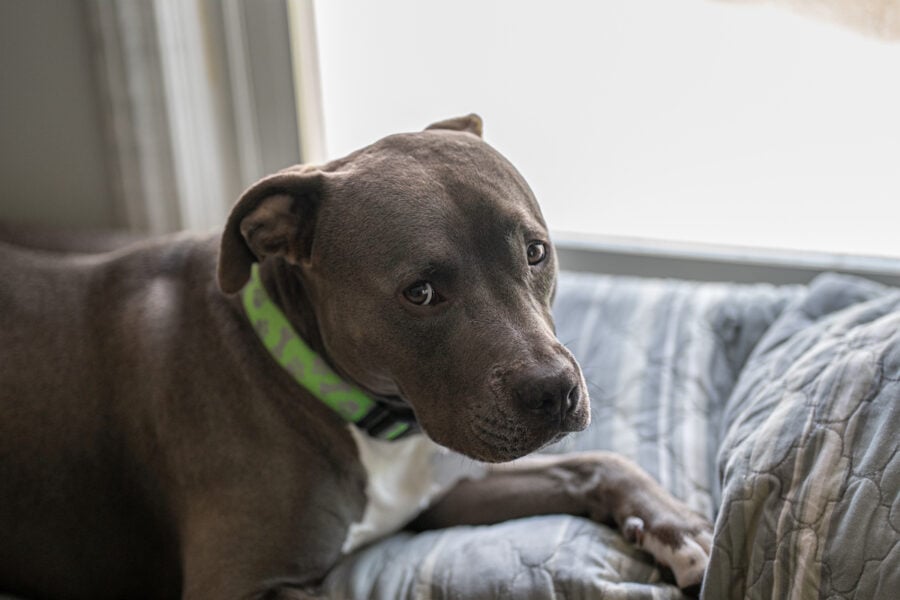





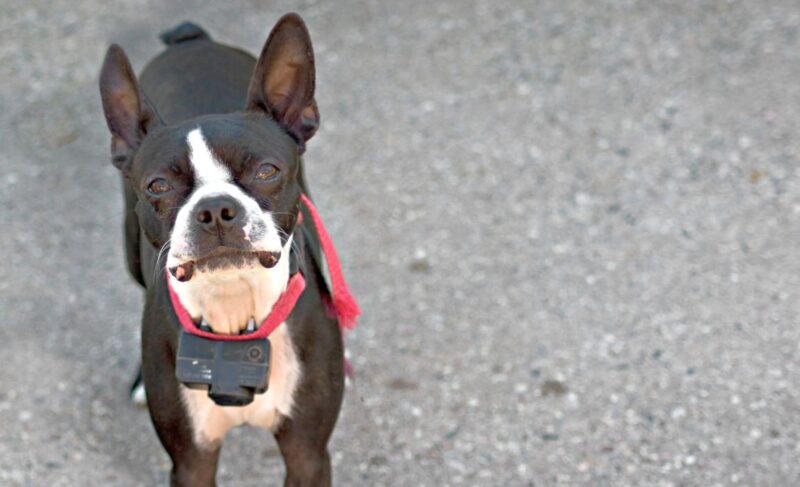
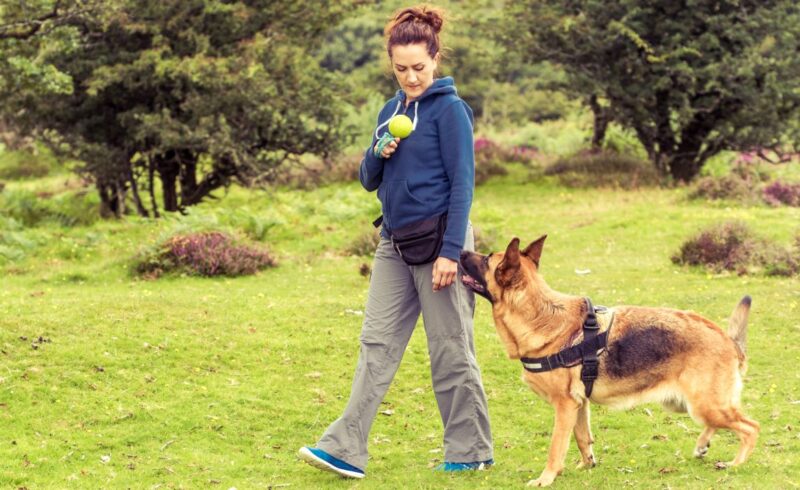


Leave a Comment